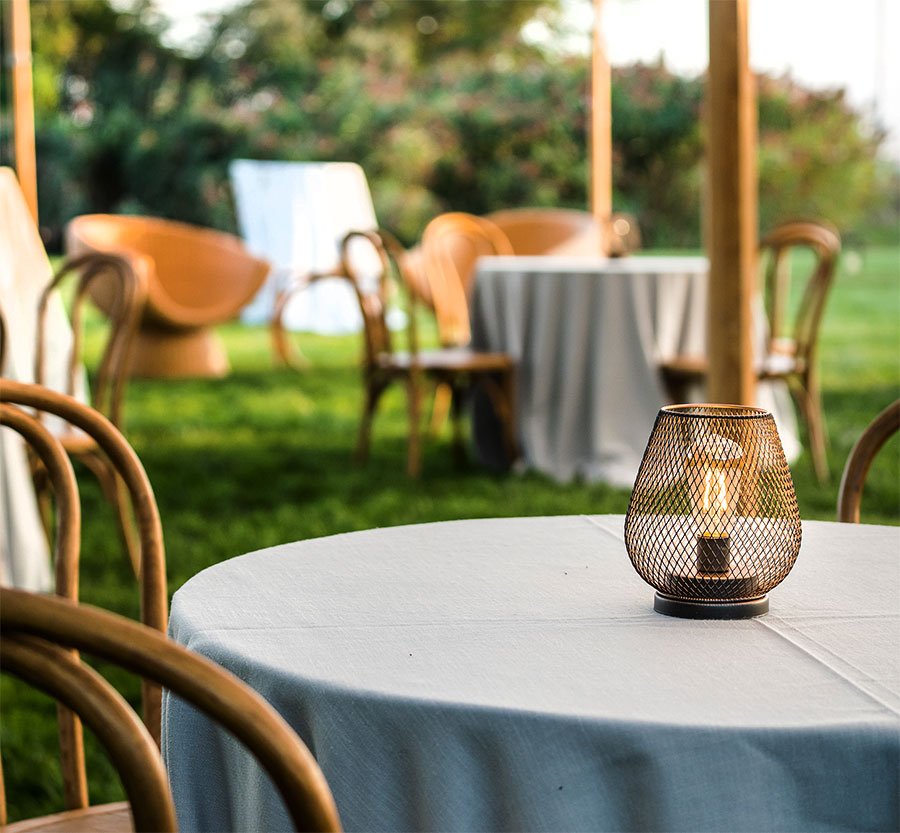How to Arrange Your Wedding Seating Chart
Wedding Planning
Elettra Wiedemann | Executive Director of Mama Farm
September 21, 2023
Planning the perfect wedding is no small feat, and the seating chart is often one of the most overlooked yet crucial elements. A well-thought-out seating arrangement can make all the difference in creating a harmonious atmosphere for your special day. Whether you're hosting a grand affair or an intimate gathering, our comprehensive guide will walk you through the art of arranging a wedding seating chart that leaves everyone happy. If you're looking to host your wedding on Long Island, check out our beautiful, rustic wedding venue.
Planning Your Wedding Seating Chart
Determine Table Size and Shape
When creating your wedding seating chart, the first step is to decide on the table size and shape. Round tables are popular as they encourage conversation among guests. On the other hand, rectangular tables can be easily arranged in various configurations, accommodating more people in limited reception space.
Consider Your Layout
Once you've selected tables, consider the layout of your wedding venue. Think about the placement of the dance floor, sweetheart table, and head table. You'll want to ensure there's enough space for guests to move comfortably and for servers to navigate.
Seat the Happy Couple
Now, determine where the bride and groom will sit. Popular wedding traditions include the sweetheart table for just the couple or the head table alongside the wedding party.
Seat the Parents
Your head table or sweetheart table are the anchor to the rest of your seating arrangements. Once you know where the happy couple will sit, play with different options for seating the rest of your guests. We suggest starting with the couple’s parents or immediate relatives and wedding party. Generally, parents should be seated near the happy couple, either at the head table or adjacent round or rectangular tables.
Seat the Wedding Party
Anyone who is making a toast or will be needed for photos should be seated near the bride and groom and near each other. For the wedding party, members can be seated at the head table or at separate tables with their partners and close friends. This arrangement allows them to socialize and enjoy the evening.
Group Guests
When grouping guests, consider putting family members, close friends, or acquaintances together. Aim for a mix of ages and interests, making each table a comfortable environment for conversation. It might be a good idea to seat children or families with small children at the periphery of the reception so that they can move around and play without causing too much distraction for others. For elderly guests, consider seating them in an area that is thoughtful with regard to noise levels, accessibility to the entrance/exit and bathrooms.
Assign Seats or Tables
For your seating arrangement, you can either assign guests specific seats or just assign tables with more general seating. If you choose to assign tables, consider using a table number to make it easy for guests to find their spot.
Use Seating Chart Templates
If you have decided to assign specific seats, consider utilizing a seating chart template available online or through wedding planning software to streamline the process. If you are working with a wedding planner, they will be able to do this with you.
Wedding Seating Chart Etiquette
First things first, keep in mind the golden rule of assigned seating: Make your guests feel comfortable and welcomed. To achieve this, consider the relationships among your guests. Are there family members or close friends who haven't seen each other in a while? Reunions can add warmth and cheer to your wedding. On the other hand, be mindful of any potential conflicts or strained relationships – you wouldn't want to seat feuding siblings together.
Another key aspect of wedding seating chart etiquette is the accommodation of special needs and preferences. For elderly guests or those with mobility issues, it's preferable to place them near the entrance and exit points, places with less noise, or restrooms. Seating children or families with small children at the periphery of the reception so that they can move around and play without causing too much distraction for others is also something to consider. If you have a friend or family member coming with a new baby, consider seating them in a place where they can easily slip in and out to tend to the baby, breastfeed or just get some quiet time. For guests with dietary restrictions or allergies, ensure they're seated close to the kitchen for easy communication with the catering staff.
Final Tips & Tricks
Once upon a time, seating arrangements were done with pencils, paper and a lot of erasers. These days, digital seating charts are all the rage. They allow for seamless adjustments without a fuss and enable you to share it with your wedding planner or venue staff with ease. So, go ahead and embrace the convenience of technology! Keep in mind that planning your seating chart is a process that will likely require many changes and adjustments along the way. It's best to start this task a few weeks before the wedding, as you'll need time to gather RSVPs and make necessary tweaks.
As for seating options and styles, there's no one-size-fits-all solution. Depending on your venue layout, number of guests, and personal preferences, you can choose from various arrangements such as round tables, banquet-style long tables, or even less formal, open seating plans. One thing is for sure: Listing your guests alphabetically will make it simpler for everyone to find their designated seat and minimize confusion on the big day.
Finally, remember that no seating chart will be perfect, and it's impossible to please everyone. The key lies in creating a comfortable environment for your guests, while putting your own needs and preferences in the foreground. After all, it's your special day – enjoy it!



